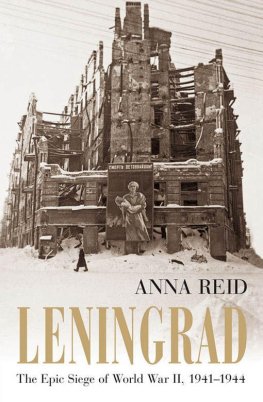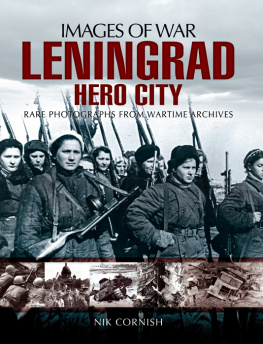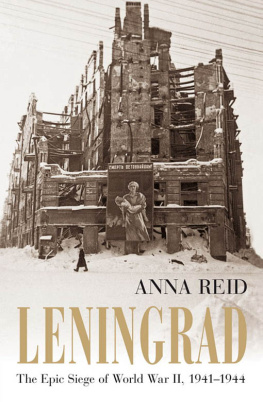


An American agent met with a Russian agent one bright summer morning when the world was collapsing in the face of Nazi terror. It was June 2, 1942; the Second World War was not going well for the Allied forces. Most of Europe had already been conquered by the Nazi German onslaught. France had fallen, and so had Norway, Denmark, Poland, Belgium, and Czechoslovakia. Now the Germans were deep inside Russia, clawing away at the countrys innards.
The American agent and the Soviet agent may have spoken of these things when they met. They may have talked about the need for cooperation between their countries, which were now allied against the Nazi threat. All we know is that after they spoke, the Soviet agent passed a wooden box to the American, who took the box and left the building.
Inside the wooden box was a strip of microfilm that, when unrolled, would stretch over a hundred feet long. It contained hardly any words: just lines and dots and ancient monastic symbols in complicated arrangements.
The Russians hoped it would help change the course of the war.
The microfilm had taken a long route to get all the way from Russia to Washington, D.C. It had been flown by plane to Tehran, then driven across the deserts of the Middle East and North Africa to Cairo. From Cairo, it had been put back on a plane and flown to Brazil, and from there, to the United States. Now it was about to embark on the final leg of its journey to New York City.

First the American agent stopped for lunch at a cafeteria. He got up from the table to go to the bathroom. When he came back, the table was empty. The box with the microfilm was gone.
He had just lost one of the most widely discussed documents of the war.
Panicked, he scanned the room: People ate. Knives scraped across plates. A busboy retreated toward the trash cans with a tray full of garbage.
There, on the kids tray, tipping toward the peelings and rinds, was the box.
After a journey of ten thousand miles across steppe, sand, sea, and jungle, the microfilm almost ended its trip in the trash.
The agent stopped the kid short of dumping the microfilm. He retrieved the box. The stupid accident was averted.
The agent set out for New York City. There was a lot to be done. In the next few weeks, hundreds of copies of the documents encrypted on that strip needed to be made, and people were already clamoring for it to be made public.
By the day the Soviet agent and the American agent met to pass along the microfilm, the Germans had conquered most of Europe and then had poured east into Russia. They seemed unstoppable. Their tanks had swarmed across the fertile fields of Russias southern provinces, destroying villages as they went. And in the north of Russia, the city of Leningrad, once the countrys capital, had been surrounded for nine months, locked within its rivers and its trenches, blasted daily by air raids and long-range artillery.
The document on the microfilm concerned the city of Leningrad.
More than a million people trapped inside the city were blocked off almost entirely from the outside world. Over the winter, they had been without electricity, without running water, without food, without firewood, and almost without hope. Families ate wallpaper paste and sawdust. Women prowled basements for corpses to eat, and there were rumors that gangs of men who had turned cannibal went out at night to hunt for victims in alleys. Germans rained down incendiary bombs on the roofs and strafed the squares and avenues during nightly air raids. Adolf Hitler had demanded that the city and all its inhabitants be utterly destroyed.
Secret Directive No. 1a 1601/41: The Fhrer has decided to erase the city of [Leningrad] from the face of the earth. I have no interest in the further existence of this large population point after the defeat of Soviet Russia.
German high command felt it would be too costly to feed all the prisoners of Leningrad if they were captured, and Hitler considered the Russian Slavs, like the Jews, to be an inferior race, fit only for slavery or extermination. His vision was to make room to live for his Aryan cohorts. Russia would become breadbasket, oil field, and Teutonic playground in the thrilling gymnastic future of the triumphant Nazi Reich.
In New York, on June 3, the microfilm was unspooled and stretched across an illuminated table. Men inspected it with magnifying glasses. Contained on the film was not, peculiarly, the plans for some technological secret a submarine or the atomic bomb. It was not some fragment of Enigma code or unscrambled German battle order.
Instead, the microfilm contained 252 pages of the musical score for the Seventh Symphony of a nervous Russian composer named Dmitri Shostakovich. Its codes and symbols would be translated by an orchestra of more than a hundred and would be broadcast to millions sitting by their radios but we are still arguing today about what secret messages the piece contains, what cries for help.
The score included few words: a few typical performance directions in Italian, as was the tradition. And, on the first page, an inscription in Russian: Dedicated to the city of Leningrad. For this reason, it was called the Leningrad Symphony.
Why had the Soviet government arranged so carefully for this piece to be shipped to the West across battle lines, across a Middle East that was swarming with Fascist tanks, across seas festering with enemy subs? How could it possibly be worth it?
And who was the composer of this desperately sought-after score? Dmitri Shostakovich spent the first several months of the Siege of Leningrad trapped in that city under fire, writing much of his Seventh Symphony in breaks between air raids. He had first announced that he was working on the piece over the radio in September 1941, just a few weeks after the Germans had started shelling the city. He had explained his intentions to an audience of thousands.
The day of his radio broadcast, Shostakovich almost missed his appointment to speak on the air. As he was walking through the streets of the city, the Germans started their daily assault. Sirens howled. An urgent voice barked over the loudspeakers, This is the local defense headquarters! Air raid! Air raid! Shostakovich scampered to a bomb shelter. Planes roared over the citys spires and canals. Explosions echoed through the Classical avenues. The composer hid until the all-clear sounded.
As a result, by the time he got to the radio studio, he was almost late. The staff rushed him in front of a microphone, and he delivered his message in his high, tense tenor. It buzzed out of radios all over the city where buildings burned and windows gaped without glass.
An hour ago I finished scoring the second movement of my latest large orchestral composition, he told his fellow citizens.
In spite of the war and the danger threatening Leningrad, I wrote the first movements quickly.
Why am I telling you this? Im telling you this so that the people of Leningrad listening to me will know that life goes on in our city....














